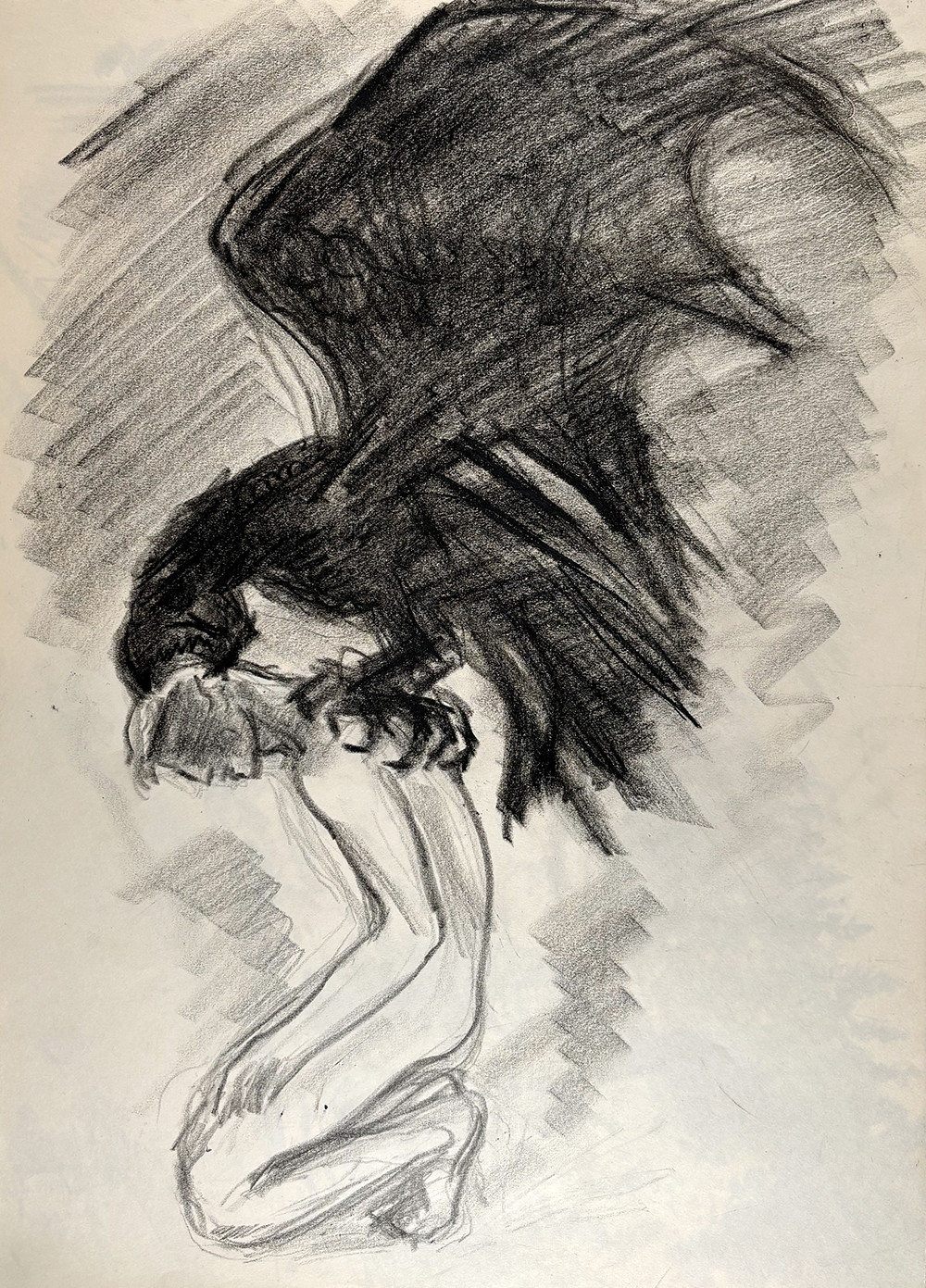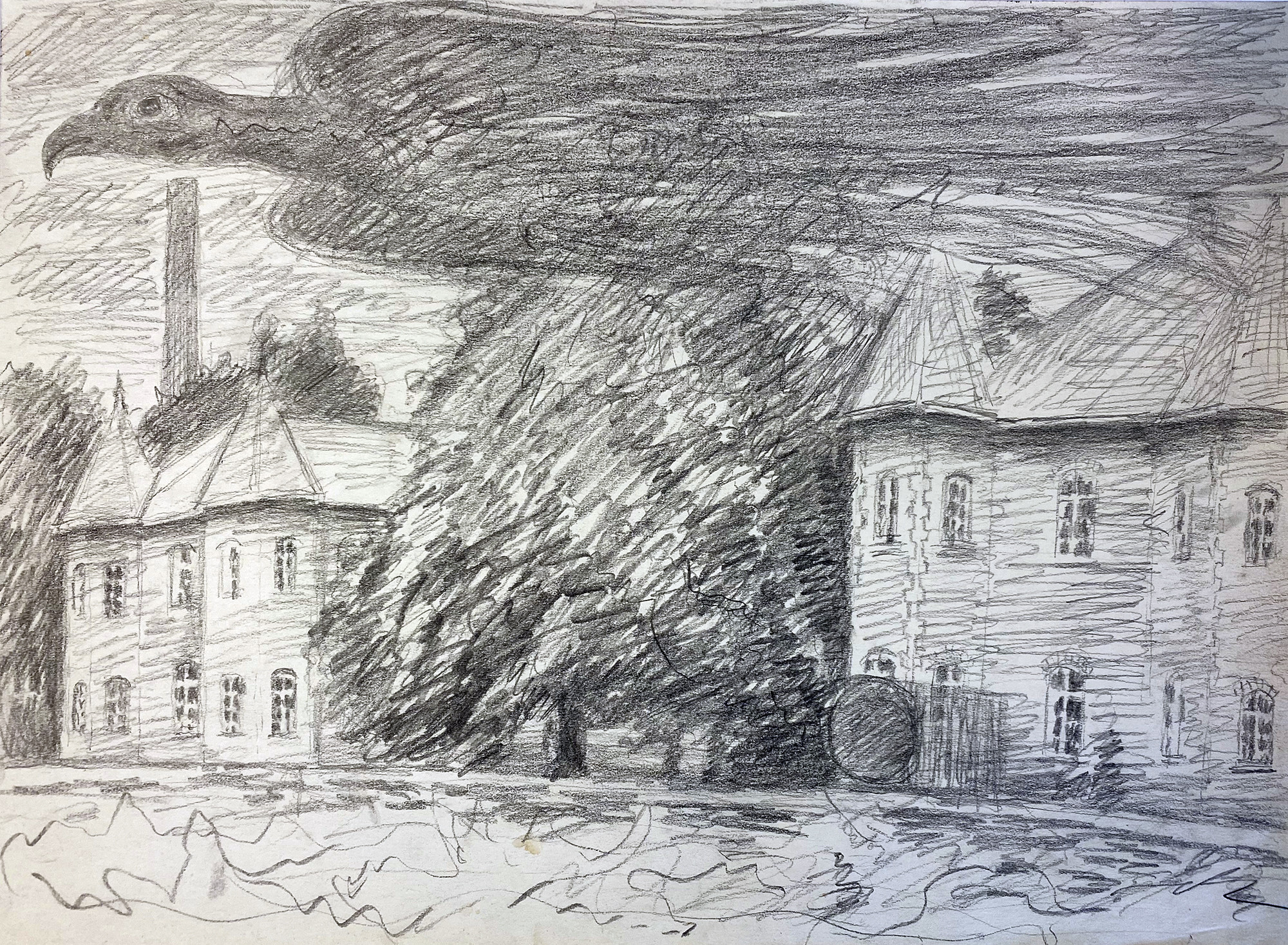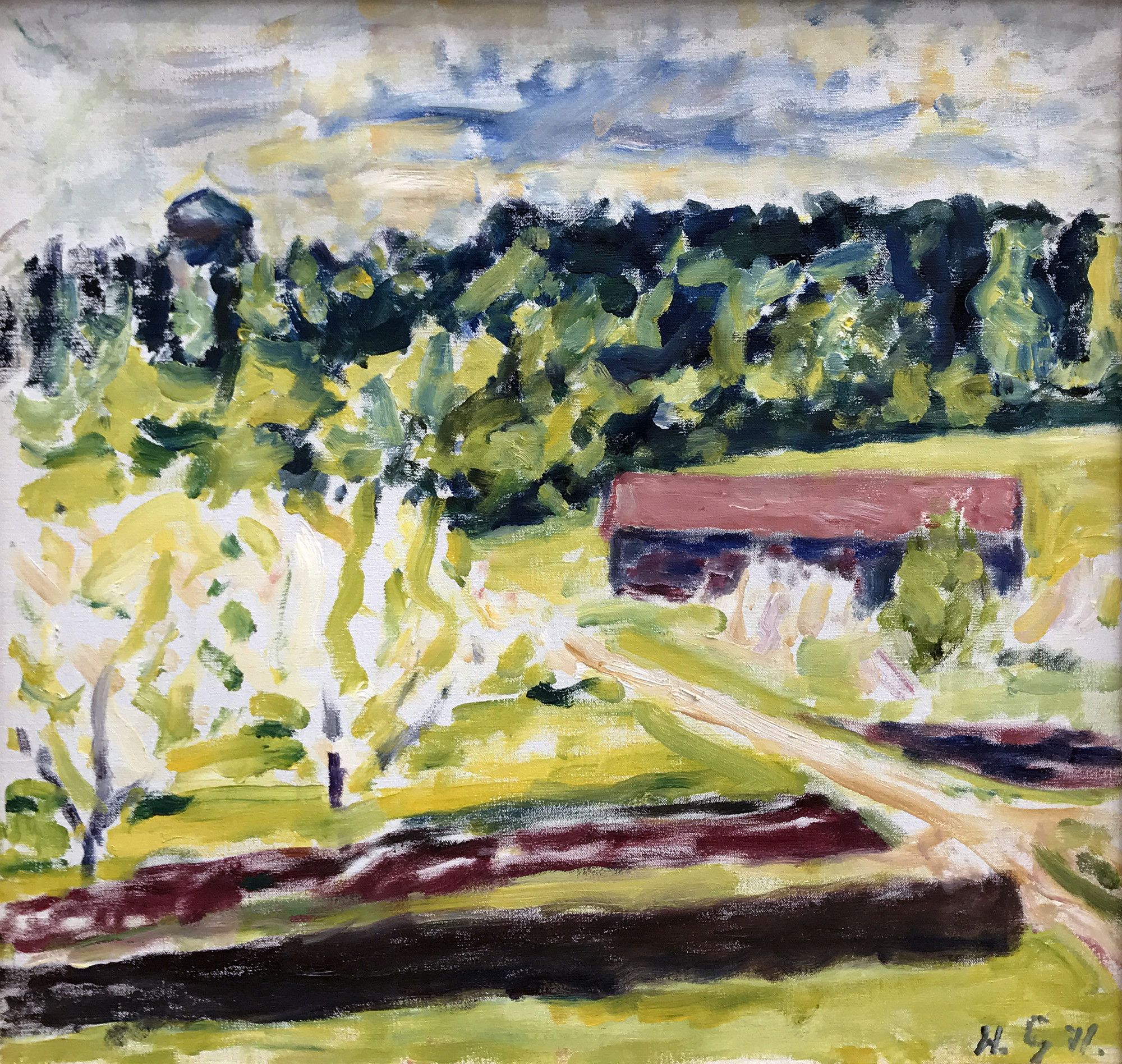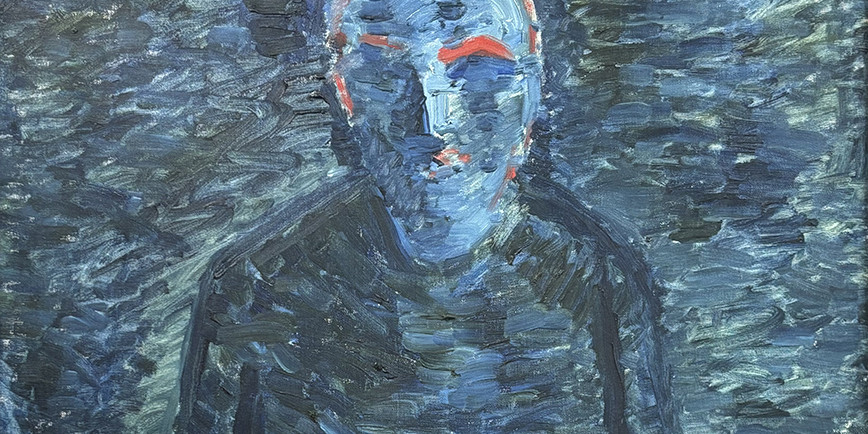Open during events, when the cultural centre is open, and by appointment. Contact: guro.nesse@laerdal.kommune.no
Is the myth of the mad and brilliant artist true? Perhaps this exhibition can help you decide for yourself?
Visual artist Hans Gjesme (1904-1994) became a paranoid schizophrenic and was forcibly admitted to Gaustad mental hospital in 1955. He lived there until 1971, but did not pause his artistic work – quite the contrary. This exhibition offers insight into Gjesme’s works from this time
Portrayal of an illness
When Gjesme was admitted, it seemingly put an end to a promising artistic career. The often-exhibited painter disappeared from the public eye. However, inside Gaustad in Oslo, the Lærdal artist continued working. Sogn Art Center is exhibiting close to 100 highlights from the 16 years he spent there. The majority of the images have never before been shown publicly.
Hans Gjesme painted and drew his experiences as a patient. At times he was too psychotic or heavily medicated to work. In better periods, his strong creative urge probably helped make his stay at Gaustad more bearable

The artist suffered from an illness that at times makes it difficult to distinguish what is real and what is not. In this state, often dealing with dark thoughts, he created powerful and emotive images. The work is of no lesser quality than that of the preceding decades. And they provide a rare and more nuanced insight into what it was like to be a mentally ill artist.
His depictions of nature and architecture are at times surprisingly bright, upbeat and beautiful. Thus, they stand in contrast to negative perceptions of mental illness and gloomy representations of psychiatric institutions. As far as we know, no other Norwegian visual artist has documented life in a psychiatric institution as thoroughly as Gjesme.
Mental state and loneliness
In a 1957 diary entry, Gjesme wrote:
«The remote hypnotist has taken up permanent residence in me, he follows everything I live and experience. In my thoughts, everything I see and hear, everything my body feels. He works with moods, thoughts, feelings and influences on body and spirit. The hypnotist sends mental images
to achieve effects, for example dragon, lizard, devil, dwarf, fire knife, genitals, spinning wheels, etc. If I imagine it outside of me, I can see it spiritually.»
Gjesme tried to describe these mental images in several works

Among the Gaustad works are several images of lonely and apathetic fellow patients. Both the loneliness and the illness became particularly visible when they had time off from occupational therapy. Gjesme depicted lute-backed patients walking alone in the park, patients resting, and patients staring yearningly out windows.
Everyday life as a patient
When it opened in 1855, Gaustad hospital was Norway’s first mental asylum. It consisted of six wards and other buildings, sectioned around a large tower. The hospital was meant to be as self-sufficient as possible, which is why it also owned and operated the Gaustad farm.
Work and activity were seen as an important part of treatment, and patients who were able to do so were included in the operation of the hospital. Gjesme often depicted the outdoor team working, or coming and going. Lute-backed men in uniform work clothing and long boots, often in a line, walking in pairs.

Life inside the ward also provided motifs – such as a sitting room with Christmas decorations, patients in the hallway, group therapy sessions, men reading or playing cards, and nurses working.d.
Vettakollen replaces the Lærdal mountains
At Gaustad, the steep Lærdal mountains and the Voll farm – which Gjesme frequently painted before being admitted – were replaced by Vettakollen and the pastoral rolling hills around the hospital. He depicted landscapes both with and without people and animals The park and the large beech and chestnut trees in the hospital courtyards were portrayed in countless drawings and paintings from different seasons.

The Gaustad architecture made a strong impression on Gjesme. He painted and drew the farm and grounds from all possible angles.
Gjesme portrayed both fellow patients and staff at Gaustad. In the exhibition, you will see the gardener, people in the workshop, a doctor talking to a patient in the park and nurses cleaning windows or welcoming patients.
Visit the exhibition and make up your own mind regarding the effects of mental illness on human creativity. Was Hans Gjesme mad and brilliant?
